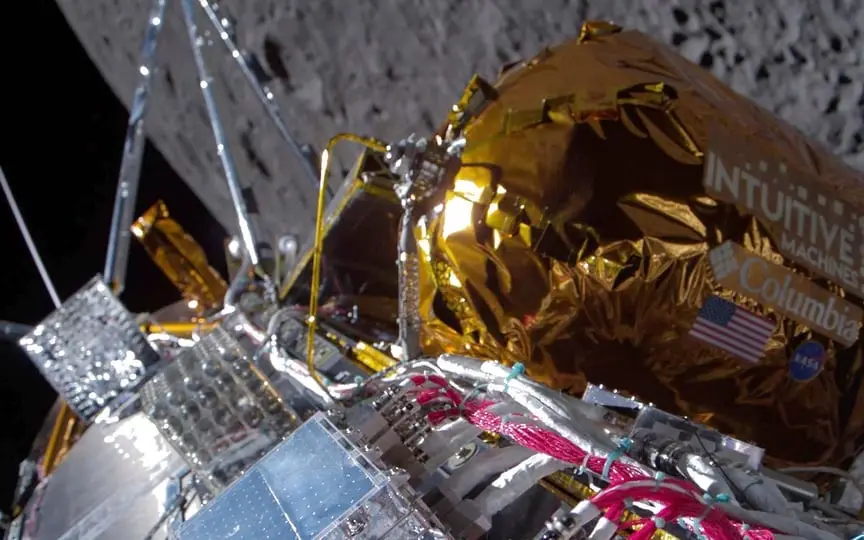Private lander successfully lands on the moon in the US after over 50 years
On Thursday, a private lander successfully landed on the moon, marking the first U.S. touchdown in over 50 years. However, the lander initially only sent a weak signal back to Earth until flight controllers worked to establish better contact.
Despite the unclear communication, Intuitive Machines, which built and operated the craft, confirmed that it had landed vertically. But it did not provide additional details, including whether the lander had reached its intended destination near the moon’s south pole. The company stopped its live webcast shortly after detecting a lone, weak signal from the landing.
“We can confirm without a doubt that our equipment is on the surface of the moon,” director of operations Tim Crain said of the growing tension at the company’s Houston control center.
Added Intuitive Machines CEO Steve Altemus: “I know this was a nail-biter, but we’re on the surface and we care. Welcome to the moon.”
The data finally started flowing in, according to the company’s announcement, two hours after contact.
The landing put the US back on the surface for the first time since NASA’s famous Apollo moonwalkers.
Intuitive Machines also became the first private company to successfully land on the moon. Only five countries have achieved this feat. Another US company, Astrobotic Technology, shot it last month but never made it to the moon and the lander crashed back to Earth. Both companies are part of a NASA-backed program to jump-start the lunar economy.
Astrobotic was among the first to pass on the congratulations. “An incredible achievement. We can’t wait to join you on the lunar surface in the near future,” the company said via X, formerly Twitter.
Intuitive Machines “achieved the landing of a lifetime,” NASA Administrator Bill Nelson tweeted.
The last few hours before touchdown were extra tense when the lander’s laser navigation system failed. The company’s flight control team was forced to activate an experimental NASA laser system, and the lander made an extra lap around the moon to allow time for a last-minute switch.
When this change finally occurred, Odysseus descended from a lunar-crushing orbit and steered himself toward the surface, aiming for a relatively flat spot among all the rocks and craters near the South Pole.
As the designated touchdown time came and went, controllers at the company’s command center anxiously awaited a signal from the spacecraft some 250,000 miles (400,000 kilometers) away. After almost 15 minutes, the company announced that it had received a weak signal from the lander.
Launched last week, the six-foot carbon fiber and titanium lander – 4.3 meters tall – performed six tests for NASA. The space agency awarded the company $118 million to build and fly the lander, part of its effort to commercialize missions to the moon before the astronauts’ planned return in a few years.
The Intuitive Machines release is the latest in a series of landers from countries and private outfits looking to explore and, if possible, exploit the moon. Japan landed on the moon last month, joining Russia, the US, China and India in previous wins.
The United States bowed out of the lunar landscape in 1972 after NASA’s Apollo program landed 12 astronauts. Pittsburgh’s Astrobotic launched it last month, but it was derailed by a fuel leak that caused the lander to plunge back through Earth’s atmosphere and burn up.
Intuitive Machines’ target was 186 miles (300 kilometers) from the South Pole, about 80 degrees latitude, and closer to the pole than any other spacecraft has come. The site is relatively flat, but surrounded by boulders, hills, rocks and craters that hold frozen water, which is a big part of the charm. The counter was programmed to choose the safest place near the so-called Malapert A crater in real time.
The solar-powered lander was supposed to operate for a week, until the long moonlit night.
In addition to NASA’s technology and navigation experiments, Intuitive Machines sold space on the lander to Columbia Sportswear to fly the latest insulating jacket fabric; sculptor Jeff Koons for 125 mini moon figures; and Embry-Riddle Aeronautical University, which provides a set of cameras to capture images of the landing.




